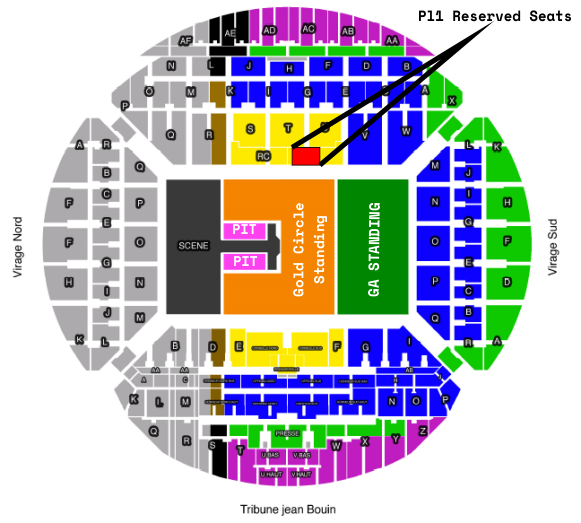Orange Velodrome Marseille - The Rolling Stones

Address
3, Boulevard Michelet, 13008, Marseille, France
Directions By Road
From the Airport: take the A55 to the centre of town, then follow the arrows and continue for approximately 25 minutes.
From the North Highway: Take the Prado tunnel (Aubagne exit through the tunnel) then follow the Orange Vélodrome signs (Boulevard Rabatau, Boulevard Michelet)
From the East Highway: Take the bus 83 direction Rond-Point Prado and stop at the terminus Rond-Point du Prado
By Metro:
From your departure station: Take or join the M2 line and stop at the Rond-Point du Prado station to access the Jean Bouin and Virage Sud stands. Get off at Sainte-Marguerite Dromel station to access the Ganay and Virage Nord grandstands
By Bus:
From Castellane-Luminy: use line 21 and get off at the Orange Vélodrome stop - From the Old Port: Take the bus 83 towards Rond-Point du Prado and stop at the Rond-Point du Prado terminus
The Orange Velodrome
Initially designed to accommodate 35,000 people, the venue was extended several times over the 20th century. However, the most notable change took place before the 1998 Football World Cup, when the stadium's capacity was increased to 60,000 seats. The stadium was already known internationally for hosting Olympique de Marseille matches, but now it could also hold major events, such as Rugby World Cup matches (2007) and concerts (Luciano Pavarotti in 2002, Johnny Hallyday in 2009…). Inaugurated in 1937, in front of 30,000 spectators, the "Stade Vélodrome" designed by French architect Henri Ploquin will always be associated with some of the greatest sporting moments in Marseille. To celebrate the occasion, a major one-day sporting event was organized, which included an athletics meeting and a cycling race. It concluded with a friendly match between the Olympique de Marseille French football team and the Italian team, Torino FC.
In its early days, the stadium was a venue for cycling races (hence the name Vélodrome), athletics trials, rugby matches and even motorsport competitions.
The Orange Velodrome is an avant-garde, fully connected, eco-friendly venue. Equipped with the most modern communication technologies, it offers 4G coverage that can be accessed for all the people inside the stadium. As for aesthetics, this stadium features a 25-metre high "skirt" that goes around it, lit by LED lights, and which changes colour according to the event. At 700 metres long, it's the largest "cinema" screen in France! Not only is the Orange Velodrome at the cutting edge of technology, it was also designed to be environmentally friendly.
Various installations around the stadium help to make it water- and energy-autonomous. The combination of a rainwater recovery system and vertical wind turbines helps with flushing toilets and watering the pitch. The recovery of heat from a nearby wastewater treatment plant, linked to the stadium, provides heating all year long. This is the only system of its kind in France and helps to considerably reduce energy consumption.
Finally, as a responsible and environmentally friendly stadium, this new venue encourages everyone to sort, recycle and reuse. The recovery of rainwater makes it possible to both reduce costs and conserve this resource. In terms of non-potable water (or greywater), the Orange Velodrome is self-sufficient. It uses this water for the pitch, toilets and for cleaning outside areas. This autonomy is achieved by making use of the stadium roof and the curved shape of the canopy to collect and store the rainwater that falls on it. This system also has another advantage, in that it limits the impact of the discharge of water into urban areas, thus helping to reduce the risk of flooding.
The reconfiguration of the stadium and surrounding area, with a focus on energy optimization in all projects, included the creation of a hot-water loop, connected to the Marseille wastewater treatment plant. Initially seen as a constraint, the proximity of this plant was in fact an opportunity waiting to be seized, and led to the creation of the largest private hot-water loop in France.
At the heart of this system, treated wastewater is recovered and sent to heat exchangers (the water has a constant temperature of 15° C in winter and 20° C in summer). The water from the treatment plant will therefore cool or warm the heat exchangers as required: heating in winter and cooling in summer.
NB: All information is provided in good faith and information my be subject to change - any errors or admissions please email: customersupport
